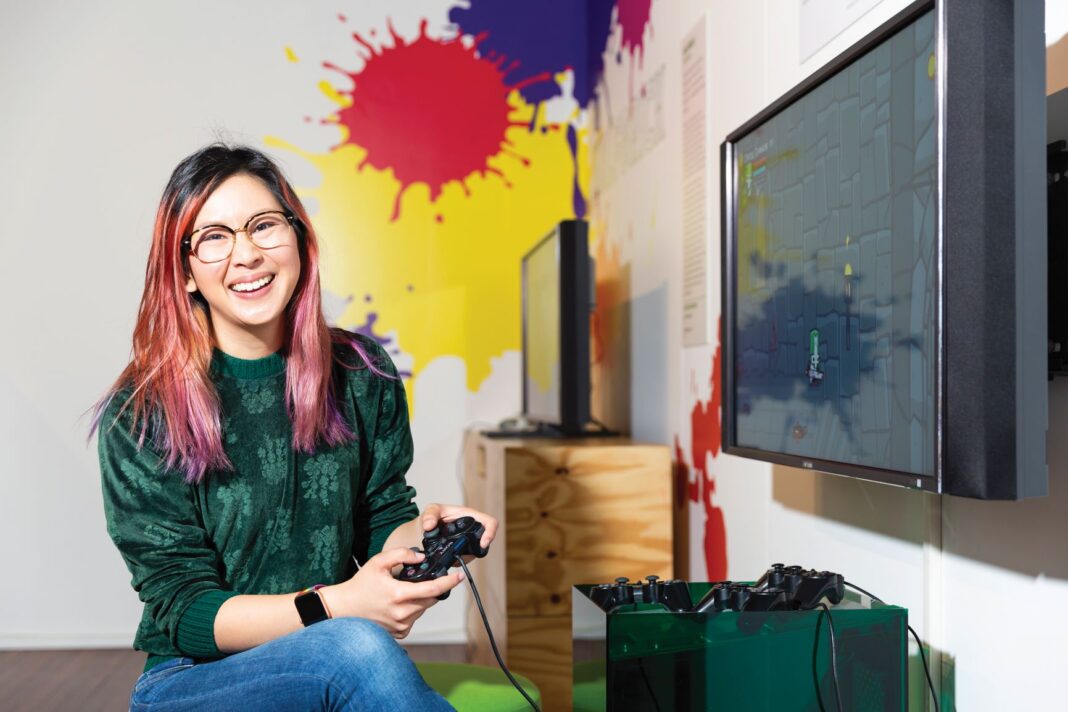Once reserved for the arcade or those lucky enough to have Pong at home, video games have come a long way since the days they were most often played by those lining up to tip coins into Donkey Kong, Mortal Kombat or Space Invaders.
Having moved into our homes through consoles, computer gaming, and even mobile phone apps (Candy Crush anyone?), the entertainment medium is ubiquitous and multi-faceted in contemporary society.
The National Film and Sound Archive’s new exhibition, Game Masters, is a playable history of video games across 40 years of the medium’s history with 80 playable games spanning many gaming genres and generations.
And when you’re done honing your skills in the arcade or picking up a controller and playing any one of the amazing console games like 1986’s Alex Kidd in Miracle World or 2009’s Brütal Legend, the exhibition also features interviews, never-before-seen concept art, and a display of vintage consoles and collectable items.
Good Game Spawn Point’s Angharad ‘Rad’ Yeo told Canberra Daily the exhibition allows people who might never have considered games as being important to interact with them and see all the different types of things gaming has to offer.
“If you consider games like Farmville or Words with Friends, most people play something … but it’s really easy for people to think of gaming as purely being first-person-shooters or RPGs.
“I think Game Masters, by showing off all the different types of games available, can change people’s minds of what a game actually is.”
Rad said Game Masters also shows us how gaming has influenced our culture and, conversely, how our culture has influenced gaming.
“We’re starting to see more and more that games are a ground zero for culture; things tend to happen in games first and then spill out in to the wider world.
“Games attract people who are really creative, passionate and innovative … And because it’s currently such a free space, you have those people sharing and exploring those ideas.
“You also get a lot of more niche ideas that are able to be expressed and experienced by people,” she said.
With vintage games peppered throughout Games Masters, Rad said a lot of those classic titles hold up because while technology has moved forward in leaps and bounds, good game design will always stand the test of time.
“You don’t need fancy graphics or technology to make something that’s enjoyable, all you need is really good gameplay.
“A lot of those early games really boiled down to good gameplay and gave it to us in a really simple fashion. There’s some things that humans just universally love – progress, achievement and even just running around.
“I think that’s also something that’s great about this exhibition; it shows us that we don’t need new things to find enjoyment, and there’s something special about looking back.”
The Archive’s CEO Jan Müller announced at the exhibition launch late last month that the institution will start collecting and preserving Australian video games “given their undeniable impact in contemporary entertainment, culture and technology”.
“The collection represents the cultural diversity and breadth of experience of all Australians, and it is constantly evolving just like our creative industries.”
The first phase of this video game acquisition also includes available storyboards, artwork, soundtracks and publicity materials, with the games dated from 1982 to 2019.
“It provides an overview of the evolution of the medium, as well as an opportunity to identify the archival challenges in preserving the different technologies employed – both software and hardware,” Müller said.
Game Masters is at the National Film and Sound Archive until 9 March 2020; nfsa.gov.au
For more:



